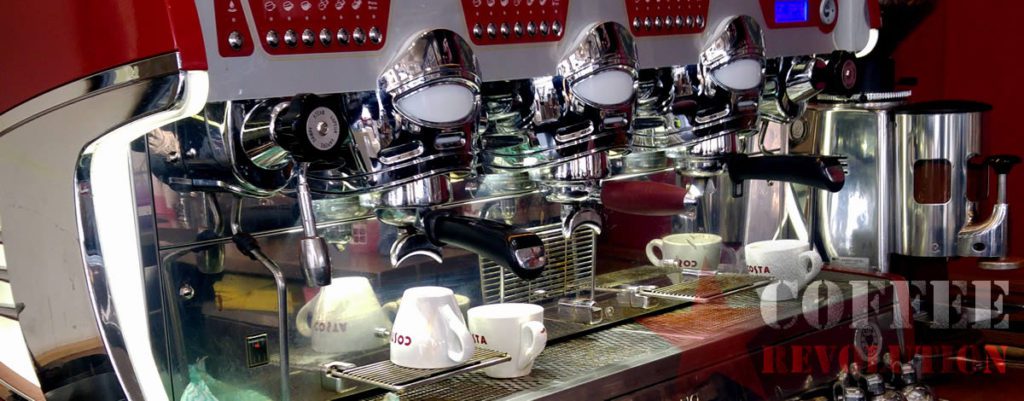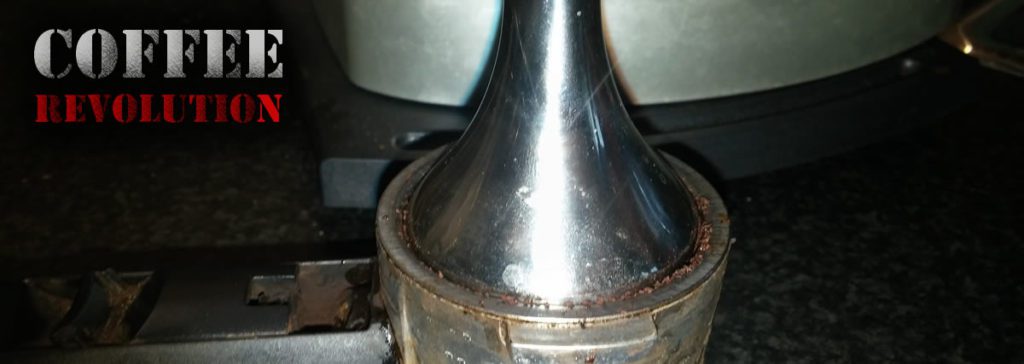Espresso machines are the heart and soul of the professional and home cafe world, and are required to make high quality espresso based beverages from a standard latte or cappuccino, all the way to drinks similar to a mocha or an undertow.

Being able to pull the perfect espresso shots on any specific machine can take a while to get just right, as every make and model of espresso machine is different and have varying functions and settings.
Be it the tiny steam powered espresso machine that can be purchased at any supermarket, or the kind seen in professional cafes that cost thousands upon thousands of dollars, it can take from minutes to hours to see what works best.
Let’s start with grind, and how it effects the final espresso shots.
When the usual 14 to 18 grams of coffee that is used to make a double shot of espresso is ground too fine, the taste will be very bitter and will be super overextracted, producing a tar colored set of shots.
If the coffee is ground too coarse, the espresso will be very light, and have a sour taste to it, being just as undrinkable as a set of shots where the coffee is ground super fine.
Finding the perfect middle ground can take a few attempts, and just going off of how the espresso shots physically look is a good indicator of their quality.
Whether the espresso machine has a built in grinder, or a separate one is used, it is best to start in the “fine” setting, and adjust from there.
Stemming and tamping the shot.
Stemming off of the grind, would be the act of using a tamp to squish down the coffee grounds in the portafilter.
A tamp is just as you would imagine a tamping device to look like: a circular base attached to a handle. While there are higher end and more expensive tamps out there, such as ones with rare wood handles, and some that have built in gauges to let you know when you have put a set amount of force down, even the most basic one will work just fine. The only real requirements of a tamp, is that it fits perfectly inside of the portafilter with just a hair of space between it and the inner walls, and that it is made of a sturdy material so it does not snap in half during use.

After dosing the coffee grounds and they are put into the portafilter, the goal is to apply roughly 30 pounds of pressure with the tamp evenly, with a slight twist of the wrist while applying the pressure.
It sounds a lot more complicated than it really is, with gauging how much pressure 30 pounds equates to, being the most difficult part.
If the pressure is applied more to one side than the other, it could create weak spots in the espresso puck, and can lead to the espresso shots coming out of one spout more than the other.
Note that some espresso machines, such as ones labeled as super-automatic, do all the tamping for you.
Also, for steam powered espresso machines that use a pressurized portafilter, tamping is not needed.
Up next, we have a few miscellaneous things.
As far as water temperature, the range should be within 195 to 203 or so degrees Fahrenheit. Any hotter will burn the coffee grounds, and any lower will produce sour espresso, and not do a full extraction. Thankfully, the vast majority of espresso machines automatically use the preferred water temperature, with some being able to be adjusted a few degrees in either way.
It should take in the range of 18 to 23 seconds for two shots of espresso. While 18 to 23 seconds is the usual range for a Doppio, in some cases, it can be more or less, and that is perfectly fine, as long as the espresso shots come out good, and taste amazing.
Overall, making the perfect espresso shots can get frustrating, but the resulting taste of all the hours of work will pay off as soon as you drink the first perfectly pulled set of shots.
